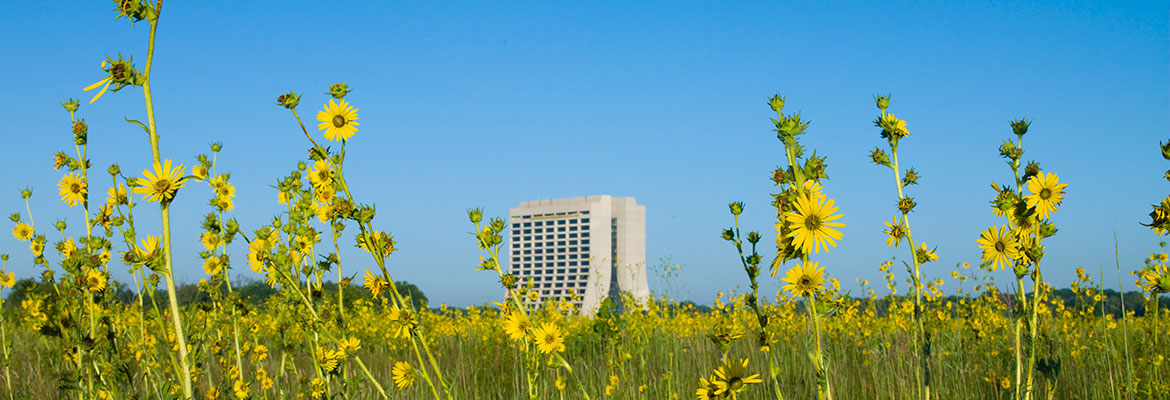The tallgrass prairie ecosystem has suffered extreme losses throughout its range since European settlement, with 99.9% being lost in Illinois, the prairie state.

The tallgrass prairie ecosystem has suffered extreme losses throughout its range since European settlement, with 99.9% being lost in Illinois, the prairie state. Fermilab has two remnant tallgrass prairie fragments (pictured), each less than 3 acres, but nearly 1,000 acres of prairie is reconstructed. Photo credit: T. Schramer
Tallgrass prairie communities are dominated by grasses intermixed with abundant forbs on mineral soil. Trees and shrubs may be present, but less than 10% of the area has a tree or shrub canopy. Soils are deep and fine-textured, usually silt loam or clay loam derived from loess or glacial till. This type is represented at Fermilab by the typical “black-soil” prairies. Topography varies from level to moderately sloping, and soil moisture ranges from dry to wet. The tallgrass prairie ecosystem has suffered extreme losses throughout its range since European settlement, with 99.9% being lost in Illinois, the prairie state. Wet and mesic tallgrass prairies are critically imperiled globally.
Fermilab has two remnant tallgrass prairie areas, each less than 3 acres. Prairie restoration efforts began in 1975, and for over 30 years, small additions were made to this project each year. Currently, nearly 1,000 acres of tallgrass prairie ranging from mesic to wet are being restored. The floristic quality index in Fermilab’s tallgrass prairie ranges from 27 to 77. Invasive plant species affecting tallgrass prairies at Fermilab include white sweet clover (Melilotus alba), reed canary grass (Phalaris arundinacea), crown vetch (Securigera varia), bird’s foot trefoil (Lotus corniculata), and teasel (Dipsacus laciniatus). Frequent prescribed fire is the major tool used to maintain tallgrass prairie communities.

